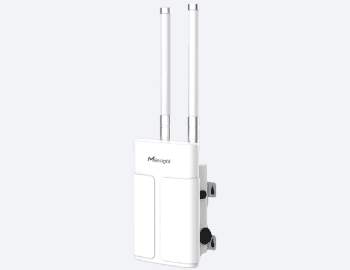LoRaWAN Gateways are pivotal for enabling seamless communication between devices. Designed for long-range, low-power networks, these gateways act as intermediaries, receiving data from LoRa-enabled devices and transmitting it to centralised network servers. This architecture facilitates efficient and reliable connectivity, which is crucial for a broad spectrum of applications, from industrial automation to environmental monitoring.
LoRaWAN (Long Range Wide Area Network) is a low-power wide-area network protocol developed by Semtech. It enables the wireless connection of sensors and devices in various industries, such as environmental monitoring, agriculture, and industrial IoT (Internet of Things). By using LoRa modulation, LoRaWAN networks provide long-range communication with low power consumption, making them ideal for battery-operated devices.
A LoRaWAN Gateway generally refers to a box or encasement housing the hardware and software required to connect IoT devices to the cloud. It is a central hub for receiving radio frequency signals sent by LoRa-enabled devices, converting them into a format compatible with network servers, and transmitting them via standard connections such as Ethernet, Wi-Fi, or cellular networks.
A gateway can support multiple devices at once, often handling hundreds or potentially thousands, depending on factors such as data rate and packet size. LoRaWAN gateways can also operate in overlapping groups to ensure resilience and seamless communication, even if one gateway fails.
These devices are sought after for their wide-area coverage, ideal for urban and rural deployments; low-power communication for battery-operate IoT devices; and their ability to handle multiple devices simultaneously, scaling IoT deployments effectively.
Applications include industrial automation for monitoring machinery and optimising processes, smart agriculture for tracking weather conditions and soil moisture levels, environmental monitoring for measuring air quality and detecting pollutants, and smart city management for parking systems and waste collection.
The Milesight UG65 is a robust gateway tailored to indoor applications. It offers a compact design and excellent connectivity with a 2km radius, supporting multiple backhaul options such as Ethernet, Wi-Fi, and 4G LTE, making it a versatile choice for industrial and commercial deployments.
A powerful option for high-demand environments is the Milesight SG50 which is a solar powered LoRaWAN Gateway that delivers reliable performance with a 45W capacity. Designed for scalability, it’s ideal for businesses expanding their IoT networks.
Engineered for outdoor use, the Milesight UG67 is built to withstand harsh environments while maintaining prime functionality. The extensive range and durability of the UG67 make it perfect for agricultural and environmental monitoring.
LoRaWAN networks can be categorised as either public or private. Public networks are maintained by service providers and offer wide coverage, particularly in urban areas. They’re quick to deploy and cost-effective since they run on unlicensed frequency bands, reducing expenses for end users.
Private networks, on the other hand, are controlled by the organisation deploying them. They provide increased security, custom configuration options, and better proficiency for specific use cases. Running a private network requires expertise in configuring gateways and software but offers greater control over network traffic and capacity.
The LoRaWAN Gateways’ adaptability and efficiency makes them indispensable for IoT projects that require long-range communication and minimal power consumption. If you’re enhancing industrial processes, monitoring natural environments, or building smarter cities, these gateways provide a solid backbone for reliable and scalable IoT networks.












